An Alfa Romeo 1900C Pinin Farina Remembered by Donald Falk
Millenove Alfa 1900 reviewed by Pete Vack
A new chapter in my car life began when I tired of the Dauphine I owned, and longed for something more sporty and exotic. As fortune would have it, at that time I learned of two gentlemen, named Bonnano and Drinkwater, who had imported three interesting cars from Italy.
Tony Bonnano had been a mechanic in the Alfa racing department, and Drinkwater was the businessman. They offered me the choice of the three, and a cooperating dealer offered to take the Dauphine in trade. The cars available were a Maserati A6GCS 2 liter coupe, a 1954 Alfa 1900C cabriolet, and a 1938 BMW 328 roadster. My experiences with the Singer and the HRG led me to shy away from roadsters, and the Alfa had a back seat. The car was black, and was quite striking, with is 26 inch Borrani wire wheels and Pinin Farina coachwork. It also had a 2 liter dual cam six and Weber carbs, and make a beautiful noise when accelerating. I don’t know what had been done to it in Italy, but it always seemed to prefer accelerating.
Driving it on a highway, I would be travelling at a fairly reasonable speed, and the car would seem to feel a little rough. This was easily cured by stepping on the gas pedal. This behavior became a cycle until I looked at the speedometer and saw that my speed was approaching 120 MPH. Even when travelling through a small town in Westchester County, NY, at moderate speed, the exhaust noise of the car seemed to draw attention. On that occasion, I found that I was being trailed by two local police cars.
The Alfa was comfortable, and handled very well, but was afflicted by a few problems. The first difficulty to appear was the deterioration of the wiring insulation throughout the car. This was not a serious problem for me, as I was good at electrical troubleshooting and repair. The next problem was a “clunking” sound when I engaged the clutch, so I changed the clutch, which did not solve the problem, which persisted. I later learned that these cars had several rubber bushings, which when they rotted, had allowed the rear axle assembly to move when torque was applied.
The final problem was a weak rear axle shaft, which broke. Replacements were not available. The closest thing we could find was a Ford axle shaft, which could be cut and milled to match the splines on the Alfa. Fortunately, the bolt pattern on the hub was identical. I was enjoying the car when I came to the attention of my local draft board, and was forced to join the military reserves. As my call to active duty was eminent, I had to sell the Alfa. I found a buyer, and later consoled him about the valve noise from the engine. The recommended exhaust valve clearance was .027” so the noise was native to the beast. The valves in the Alfa were sodium cooled and were a three piece design which allowed simple adjustment. But did he listen? The new buyer tightened the valve lash to quiet the noise, and promptly burned out all of these high priced valves.
The engine number was 1308.00074, and the chassis number was 01104. I Incidentally, when the new clutch failed to solve the problem, my rather emotional mechanic at Maserati was weeping on my fender, trying to explain that to me. My relationship with Maserati had continued, and they were the ideal shop to repair the Alfa. I also was able to purchase scuffed Pirelli Stelvio Corsa tires from them, when the factory team returned from Sebring. By then, they had moved to a larger shop in Glen Cove, NY.
Upon receiving Don’s photo, Peter Marshall replied: “*01104* still exists in the ‘States, (in Burlingame CA) nearing completion of its restoration, after many years by its present owner.”
 Book Review: Millenove
Book Review: Millenove
By Pete Vack
There has been a gap in the Alfa Romeo bookshelf for many years, right between the 6C2500 and Alfa Disco Volante. A small gap but a huge subject, for the missing model is nothing less than the car that saved Alfa Romeo and set the path for the manufacturer’s ultimate post war success, the Giulietta. The 1900 (aka Millenove—which is a shortened version of the Italian for nineteenhundred) served as a bridge from Alfa Romeo’s glorious prewar past, to the exciting future that lay ahead. Its success was crucial to the survival of Alfa Romeo.
This gap has now been filled, most admirably in fact, by a German Alfa enthusiast H.-J. Döhren, who became enamored with 1900 Alfas, obtaining first a Military version, then a PF 1900C and a Touring coupe. While restoring the cars, he naturally noted the dearth of material and books on the 1900…the last anywhere near comprehensive work was Alfa 1900 Sprint, published only in Italian, almost 30 years ago! As he accumulated material from a wide variety of sources, he soon had enough for a book.
Long awaited, Döhren’s book finally arrived here and we immediately tore into it. One garners a first impression, and a quick scan through the pages is usually enough to determine if this book is worth living with…and paying for. First we noticed the lack of a slipcover…not that we enjoy slipcovers, (they get damaged too easily) but for the upscale style of the book it was strange not to include a glossy jacket. (our copy did not have a jacket but the author told us that the first 200 do have very elegant slipcases). Paging through, we noted good quality backing, bounding, paper and layout, creative in spite of the difficult logistics of placing both German and English texts in proper order on the page. Döhren began with a thankfully short Alfa overview (we are saved from yet another history of the company!) and then got right to the heart of the matter, the development of the 1900 Berlina.
The section appeared complete, relevant and well done, covering all aspects of the car aside from the transmission (why not?). Good so far, said we and thumbed through the first seventy pages of chunky Berlinas. A lot of factory photos, many brochures, photos of a few contemporary restored examples, and yet, not nearly enough photos of restored or original cars, engines, interiors, trunks, and details. There are tech specs and original road tests, but reprinted still in the original German language.
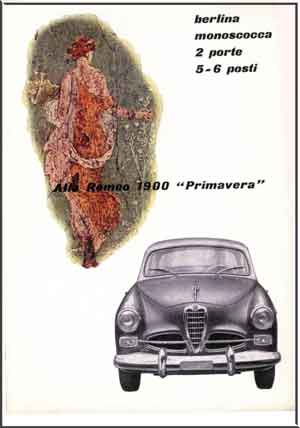
Then something magical happened. I now noted the appearance of the Primavera… a car previously covered in VT by Brandes Elitch..(1900 Primavera) and here before us was the details on that very special two-door Alfa sedan, followed by photos and brochures for the Primavera…a minor revalation and most welcome information.
What came next was even more pleasing. Döhren had arranged the content to first cover the Berlina, and then the special bodied Alfa 1900s by coachbuilder. With all due respect to the Berlina, the 1900’s true legacy lies with the special short chassis wire wheel-shod, highly-modified Alfas provided to seventeen different coachbuilders from 1953 to 1958. Bodied by Bertone, Boano, Boneschi, Castagna, Colli, Frua etcetera, these were the cars that graced the Auto shows with designs that ranged from the extremely unattractive to the extreme and beautiful Alfa B.A.Ts (so taken are we with the coachwork that it is easy to forget the 1900 underpinnings). With this, the remaining 250 pages of the book came to life; each page was better than the last, each leaf a delight of various special bodied Alfas. It is nice to be truly excited over a book. We were.
We pause for a moment to put our feet back on the ground. There are some problems, there are a few issues.
There are a few translations glitches here and there, and a missing second part to a sentence on page 32, for one of several. The explanation and description of serial numbers, placement, meanings and importance is far too brief. The layout isn’t always picture perfect. Text in German on one line and English the next can be disconcerting. It would be advisable for those who want specific information on a coachbuilder or particular chassis number to check with the author or the Alfa 1900 Registry for updates and or corrections. Photo reproduction is not always 100% perfect but better than the scans as shown in this review.
Speaking of the 1900 Register, while there are many photos of many of the special bodied cars along a special chapter on serial numbers, there are no individual histories of each car…and that, given the huge numbers, would not be expected here. Just don’t expect it! That is left to the Alfa1900 Register.
Coincidentally, while we were writing this review, long time VeloceToday reader Don Falk happened to email us about an Alfa 1900 PF cab he once owned. His story follows this review (don’t miss it), and we found mention of his chassis number in the Millenova book, as well as on the 1900 Register.
In fact, much of the information gathered in print for this book exists on various websites, which also have the advantage of being corrected and updated. Yet to be fair, while one can resort to finding and reading the information on the Net, it is simpler, easier, and more satisfying to read the same information as presented in the Döhren book. “Millenova” itself makes a good case for why such books still are published and will no doubt sell very well; to be able to take the time to absorb the information, compare images, check specs, page back and forth quickly all while relaxing in a favorite chair are distinct advantages for the book. Another generation or two may not find this so; we however, can still appreciate and enjoy the comfortable luxury of a hard bound book.As we mentioned, the coachbuilder chapters make up the essence of the book. Sections on Pinin Farina, Touring and Zagato are the most complete, the chapters on Ghia Aigle and Boano perhaps the most interesting. Photos of both contemporary restorations and original factory photos are included as often as possible. Looking at the all- important serial numbers, one starts from the number of Corto chassis made by Alfa Romeo, totaling about 1790 of all series and types. These were sorted out to the seventeen or so coachbuilders, with Touring building some 1480 coupes on a short chassis frame and a few convertibles and comp cars. Peter Marshall of the Alfa Register (who also wrote the forward to the book) figures only 20-25 percent of those Touring chassis have been found and confirmed, so many have gone by the wayside but many are yet to be discovered and registered. Pinin Farina is figured to have built about 188 coupes and cabriolets on the C (short wheelbase) chassis. Zagato produced about 40 coupe and two spiders from 1954 to 1958. The rest of the run was taken up by smaller coachbuilders, who might have done 3-10 examples on the short chassis. Of course, there were also special bodies constructed for the 1900L chassis as well; they too are covered in the appropriate chapters but the numbers are tiny.
But If you are looking for a complete list of chassis numbers, histories, body types, all in a neat little row, ala “Ferrari by Vignale”…it may never happen and this volume will be the best hard copy guide out there for a long, long while, aside from Internet sources and the 1900 Register itself.
A section on restoration is interesting but relates nothing much new in terms of describing the pitfalls of restoring a fifty-year-old Italian aluminum and steel vehicle, lacking parts, patterns, photos, materials, bodywork books, etc. It does demonstrate the necessary art of a full body off restoration, separating the skin from the Superleggera-type framework common to most of the Touring bodied 1900s. The author has had several restored, one a prize-winning drop-dead gorgeous PF coupe, so knows the ropes well. Fortunately, or unfortunately, prices have gone through the roof on these once neglected classics…making proper frame up restorations more frequent and today one might even break even on such a project. On the question of prices, they are all over the map and no price guide is offered; suffice to say that a restored Ghia SS sold in 2005 for $175,000 and in 2012 was again for sale at $350,000.
And we say once neglected, as for years they were passed up as being too large, with less sporting pretentions than the Giulietta series. Well, they were; compared to the Giulietta and Giulias, the 1900 series and even the similar 2000 series, were just not as much fun to drive. Most, even the most sporting models, retained the steering column shift, bench-type seats and large steering wheels. Therefore, many sat rusting and rotting beneath the beautiful bodywork, the mohair interiors moth-eaten in no time at all, while dealers stocked Giulietta parts, not 1900 parts.
Bench seats and all, the 1900 was still a formidable race car…even the TI Super Berlina did well in their classes in Europe and in the Panamericana Road Races. The Zagatos and a few of the Touring cars had decent competition records in Europe. But Döhren, in an all too short chapter, does not dwell on the competition record of the 1900 series…a good topic for another book, to be sure.
 Chapters on replicars, cars with 1900 DNA (Sportiva, CM 3000s, etc), books and articles available about the 1900 series, and a chapter on the Military four wheel drive version, oddly named “Le Matta” or ‘the crazy’(the first 1900 owned by Döhren) and even a look at the oddly rare Rio 2300 wrap up the book in fine fashion. It has its flaws…maybe too much to do, too little time, not enough proofing…but if you are an Alfa enthusiast, you will get this book in any event.
Chapters on replicars, cars with 1900 DNA (Sportiva, CM 3000s, etc), books and articles available about the 1900 series, and a chapter on the Military four wheel drive version, oddly named “Le Matta” or ‘the crazy’(the first 1900 owned by Döhren) and even a look at the oddly rare Rio 2300 wrap up the book in fine fashion. It has its flaws…maybe too much to do, too little time, not enough proofing…but if you are an Alfa enthusiast, you will get this book in any event.
In the end, the book excites as no website, even VeloceToday, can do. Cars rarely seen, body styles compared, body colors returning to their natural states, and coachwork by the greatest names in post-war Italy now viewed literally in a different light, make one lust after a PF three-window coupe or a second series Touring coupe with a Nardi floor shift conversion, wire wheels and aluminum bumpers, resplendent in a silver blue or burgundy finish. Döhren’s book rekindles those fires, so beware. Highly recommended for any Alfa enthusiast, mandatory for those with an interest in special-bodied Alfas.
The book was offered in Germany and EU for 78 Euro. We found an edition avaliable at this site:
http://www.gilena.it/en/books/alfa-romeo-1900-millenove-autografato-signed
Other Websites:
http://www.alfacompanion.com/alfa1900/
Millenove ALFA ROMEO 1900 boasts 320 pages, the book dimensions are 25 x 28 cm and comes in hardcover format, printed on 150 g/m² art paper, with about 850 large format illustrations, for the most part in colour. Many of them previously unpublished. The book is available in a limited edition about only 1000 copies.
The author, H.- Jürgen Döhren, is a well-known Alfa Romeo expert and has already contributed to several Alfa Romeo publications. He is a committed member of the German Alfa Romeo clubscene since 30 years, and he restores 1900 models in his garage and maintains an extensive archive on his hobby.
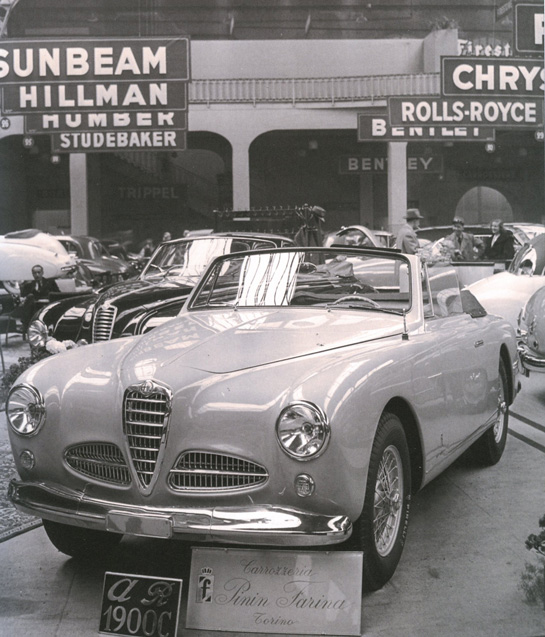
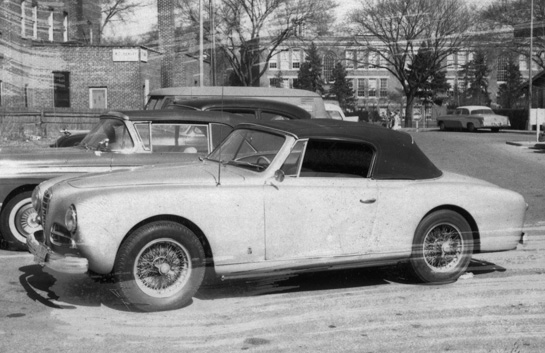
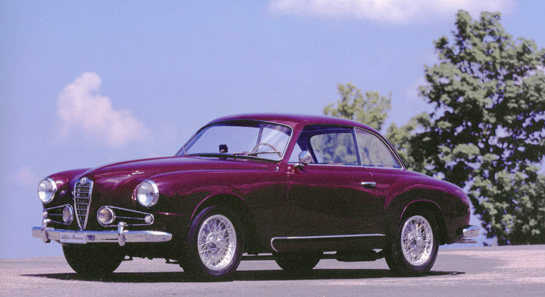
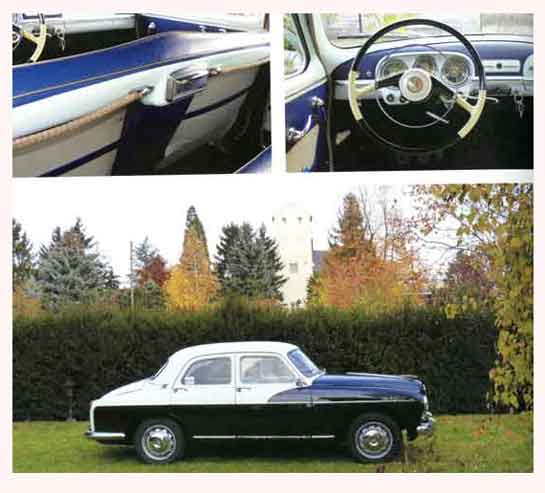
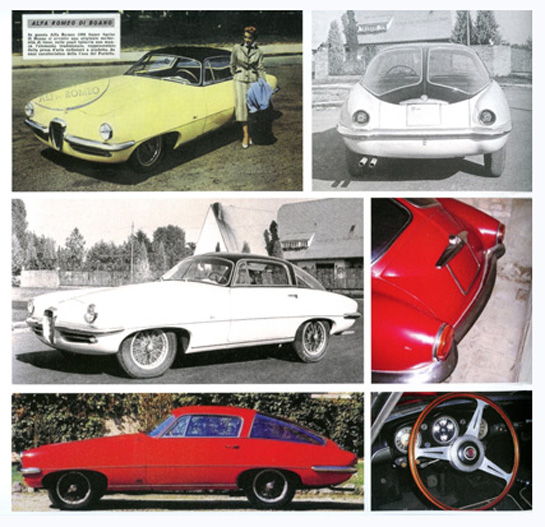
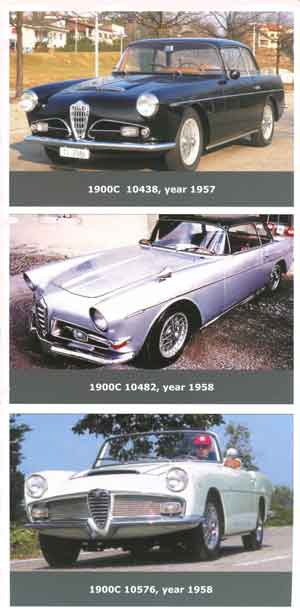
In the mid-70s a man drove a 1900 coupe to our dealership and offered it to us for around $2k. There it was, so I bought it. No bumpers, plexi windows, 4 on the tree, magneto ignition, wire wheels. Drove it to the Wichita SCCA race at Lake Afton, where they’d made a few dozen calls to people going to the newish Monterey Historic races. Well, two Maseratis showed up, brought by the same man, and they managed to gently run into each other in the vintage race, which featured our three front-engined Coopers and the aforesaid Alfa. We sold it to a man whose name I recently forgot for about $2,600 and he sold it on to someone around Watkins Glen. It even had, I think, a photocopied owner’s manual; we were told it was taken to Mexico as a practice car for the Carrera Panamericana. I wonder where it is today…
Don: – Yes, I remember the car very well! Needless to say it was a fantastic car!!! I have wondered for quite some time why nothing seemed to be presented about the 1900. If it is possible, I would like to be put in contact with the owner in Burlington, CA and I would like to take some good photos of it and send them along to both you and VeloceToday, as I live fairly close to Burlington, CA
Thanks for the review and the memories – Scott
Don: Thank you for the memories!!! Of course there are many more memories that we both have. It was a wonderful car, the 1900. I understand that the car is in Burlington, CA and that is not to far from my home. If either you or Veloce Today could put the owner in touch with me, I would love to go there and take many photos of the car and send both you and VeloceToday copies. – Thanks again to both you and VeloceToday for bringing back those great memories. Best to both – Scott
The article is a blessing on the 1900. I often think of the car. It was very self inspiring. Too bad all the pictures could not be printed of the “under restoration”.I have not see it in about two years but it is still in my mind.
Regards,
Scott Saret